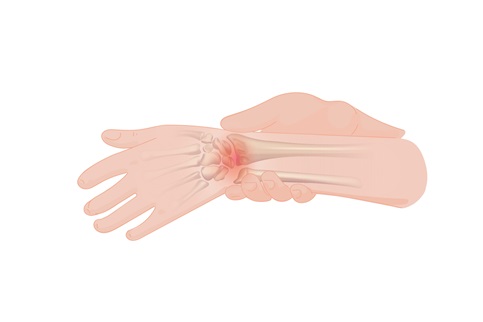Understanding Wrist Pain: Causes, Statistics, and Probable Treatments
Wrist pain, especially stemming from the tendons of the extensor muscles, can be debilitating and affect individuals across various demographics. Understanding its prevalence, mechanisms, and potential treatments is crucial for both prevention and management. Let’s delve into the intricacies of this common ailment.
Demographics Affected
Wrist pain, particularly associated with extensor tendon issues, can affect individuals across all age groups and demographics. However, certain groups are more prone to experiencing this discomfort.
Statistics
According to recent studies, approximately 1 in 4 adults experience wrist pain at some point in their lives. Among those, individuals aged between 30 to 60 years old are most commonly affected. Moreover, athletes, especially those involved in sports requiring repetitive wrist movements such as tennis or golf, have a higher incidence of wrist pain.
Mechanism of Action
The extensor tendons in the wrist are responsible for straightening the fingers and wrist. When these tendons become inflamed or irritated due to repetitive use or trauma, it can lead to pain and discomfort. This condition, commonly known as extensor tendinitis or tenosynovitis, typically develops gradually over time.
Commonly Affected Occupations
Several occupations are more susceptible to developing wrist pain due to the nature of their tasks. These include:
- Office Workers: Individuals who spend prolonged periods typing or using a computer mouse are prone to developing wrist pain due to repetitive movements.
- Manual Laborers: Jobs that involve heavy lifting, gripping tools, or performing repetitive tasks can put excessive strain on the wrist tendons, leading to pain and inflammation.
- Musicians: String instrument players, pianists, and other musicians often experience wrist pain due to the repetitive motions involved in playing their instruments.
- Healthcare Workers: Nurses and caregivers may develop wrist pain from tasks such as lifting patients or repetitive charting.
- Athletes: Sports that involve repetitive wrist movements, such as tennis, golf, or gymnastics, can predispose athletes to wrist pain.
Probable Treatments
Fortunately, various treatment options are available to alleviate wrist pain and improve functionality. These include:
- Rest and Immobilization: Giving the wrist adequate rest and using splints or braces to immobilize the joint can help reduce inflammation and promote healing.
- Ice Therapy: Applying ice packs to the affected area can help alleviate pain and reduce swelling.
- Physical Therapy: Specific exercises and stretches prescribed by a physical therapist can strengthen the wrist muscles and improve flexibility.
- Medication: Nonsteroidal anti-inflammatory drugs (NSAIDs) such as ibuprofen or naproxen can help relieve pain and reduce inflammation.
- Corticosteroid Injections: In severe cases, corticosteroid injections may be administered to reduce inflammation and alleviate pain.
- Surgery: In cases of severe tendon damage or chronic conditions that do not respond to conservative treatments, surgical intervention may be necessary to repair the tendon or release pressure on the affected area.
Physical Therapy for Wrist Pain
let’s delve deeper into the physical therapy aspect of treating wrist pain, starting with massage, stretching exercises, strengthening exercises, and concluding with orthosis solutions.
1. Massage:
Massage therapy can help alleviate muscle tension, improve blood circulation, and promote healing in the affected area. remember it should not be painful but still a bit stimulate your nervous system. A trained therapist may use various techniques such as:
- First step:
- Effleurage: Gentle stroking movements to warm up the tissues and relax the tissues around the wrist joint. start from the head of the ulna bone and directly end on the opposing side.
- Friction: Applying pressure with the fingertips in circular motions to break up adhesions and tiny scar tissue in the hand area starting from the Radial part to the Ulnar side.
- Second step:
- Effleurage: Gentle stroking movements to warm up the tissues and relax the tissues of the back side of the hand. start from the head of the ulna bone and directly end on the beginning of the finger( distal head of the tarsal bones). repeat until you cover all the back side of your hand.
- Friction: Applying pressure with the fingertips in circular motions to break up adhesions and tiny scar tissue on the back side of the hand area. Start from the Radial bone ending part to the base of your pinky finger. Make sure you cover the whole surface.
- Trigger Point Therapy: Applying pressure to specific muscular points to release tension and alleviate pain.
2. Stretching Exercises:
Stretching exercises help improve flexibility and range of motion in the wrist joint. Here are some common wrist stretching exercises:
- Wrist Flexor Stretch:
- Action: Extend your arm in front of you with the palm facing up. Use the opposite hand to gently bend the wrist backward until you feel a stretch in the forearm.
- Repetition and Sets: Hold the stretch for 15-30 seconds and repeat 2-3 times on each side.
- Wrist Extensor Stretch:
- Action: Extend your arm in front of you with the palm facing down. Use the opposite hand to gently bend the wrist downward until you feel a stretch on the top of the forearm.
- Repetition and Sets: Hold the stretch for 15-30 seconds and repeat 2-3 times on each side.
- Wrist Pronation/Supination Stretch:
- Action: Hold your arm out in front of you with the elbow bent at 90 degrees. Rotate your forearm so that your palm faces up (supination), then rotate it down so your palm faces down (pronation).
- Repetition and Sets: Perform 10-15 repetitions in each direction for 2-3 sets.
3. Strengthening Exercises:
Strengthening exercises help build muscle endurance and stability around the wrist joint. Here are some effective exercises:
- Wrist Flexion and Extension:
- Action: Hold a lightweight (e.g., dumbbell or resistance band) in your hand with the palm facing up. Slowly bend the wrist upward (flexion) and then lower it back down (extension).
- Repetition and Sets: Perform 10-15 repetitions for 2-3 sets.
- Wrist Radial and Ulnar Deviation:
- Action: Hold a lightweight with the palm facing down. Slowly bend the wrist sideways towards the thumb (radial deviation) and then towards the little finger (ulnar deviation).
- Repetition and Sets: Perform 10-15 repetitions for 2-3 sets on each side.
- Grip Strengthening:
- Action: Squeeze a stress ball or grip strengthener as hard as you can, then release slowly.
- Repetition and Sets: Perform 10-15 repetitions for 2-3 sets.
4. Orthosis Solutions:
Orthotic devices such as wrist splints or braces can provide support and stability to the wrist joint, especially during activities that exacerbate pain. These devices help immobilize the wrist, reduce strain on the tendons, and promote healing. They are typically worn during activities or at night, depending on the severity of the condition and the recommendation of a healthcare professional.
Incorporating these physical therapy interventions into your treatment plan can significantly improve wrist pain symptoms and enhance overall wrist function. However, it’s essential to consult with a qualified healthcare provider or physical therapist to tailor the exercises and interventions to your specific needs and ensure safe and effective rehabilitation.



